Today Current Affairs: 1st December 2021 for UPSC IAS exams, State PSC exams, SSC CGL, State SSC, RRB, Railways, Banking Exam & IBPS, etc
Table of Contents
Out-Of-Pocket Expenditure (OOPE):

Out-of-pocket expenditure (OOPE) as a share of total health expenditure and foreign aid for health has both come down as per the findings of the National Health Accounts (NHA) estimates for India for 2017-18 released by Health Secretary Rajesh Bhushan.
- As a share of total health expenditure, the OOPE has come down to 48.8% in 2017-18 from 64.2% in 2013-14. Even in the case of per capita OOPE, there has been a decline from ₹2,336 to ₹2,097 between 2013-14 and 2017-18.
- One of the factors attributing to this decline is the increase in utilisation and reduction in cost of services in Government health facilities.
- If we compare NHA 2014-15 and 2017-18, there has been a decline in OOPE for Government hospitals to the tune of 50%.
- The NHA estimates for 2017-18 clearly showed that there had been an increase in the share of Government health expenditure in the total GDP of the country.
- It has increased from 1.15% in 2013-14 to 1.35% in 2017-18. Additionally, the share of Government Health Expenditure in total health expenditure has also increased over time.
- In 2017-18, the share of Government expenditure was 40.8%, which is much higher than 28.6% in 2013-14.
- The report further indicates that in per capita terms, the Government health expenditure has increased from ₹1,042 to ₹1,753 between 2013-14 to 2017-18.
- This is the fifth consecutive NHA report produced by National Health Systems Resource Centre, designated as National Health Accounts Technical Secretariat in 2014 by the Health Ministry.
- The NHA estimates are prepared by using an accounting framework based on internationally accepted System of Health Accounts 2011, provided by the World Health Organization.
Krishna River Water Dispute:
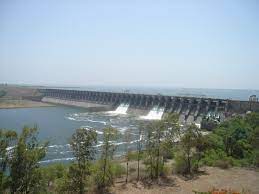
Telangana and Andhra Pradesh have submitted in the Supreme Court that there is no information forthcoming from Karnataka for the past 14 years about how much Krishna river water it has diverted.
- In turn, Karnataka argued that a lot water is going waste —“flowing down into the ocean” — and there is a need to harness it for irrigation and to replenish dry regions.
- Karnataka has sought the vacation of a November 16, 2011 of the Supreme Court which stopped the Centre from publishing in the Official Gazette the final order of the Krishna Water Disputes Tribunal II (KWDT) pronounced in December 2010, allocating the river water to Karnataka, erstwhile Andhra Pradesh and Maharashtra.
- The KWDT had further modified its final order and report on November 29, 2013 to allot surplus water to Karnataka, Maharashtra and the erstwhile State of Andhra Pradesh while preserving the allocation of 2130 TMC already made amongst them.
- The publication of the order of the Tribunal is a necessary pre-condition for its implementation. However, following the bifurcation of Andhra Pradesh, its successors Telangana and Andhra Pradesh had moved the Supreme Court challenging the KWDT’s allocation of shares.
- Karnataka has argued that its dam and irrigation projects worth thousands of crores to provide water to its parched northern areas have been stalled for all these years because of the 2011 order of the Supreme Court to not publish the KWDT decisions in the Official Gazette under Section 6(1) of the Inter-State Water Disputes Act of 1956.
- Karnataka has argued that the dispute raised by Andhra Pradesh and Telangana was between them and did not concern it.
- The dispute began with the erstwhile Hyderabad and Mysore states, and later continuing between successors Maharashtra, Karnataka and Andhra Pradesh.
- In 1969, the Krishna Water Disputes Tribunal (KWDT) was set up under the Inter-State River Water Dispute Act, 1956, and presented its report in 1973.
- The report, which was published in 1976, divided the 2060 TMC (thousand million cubic feet) of Krishna water at 75 per cent dependability into three parts:
- 560 TMC for Maharashtra.
- 700 TMC for Karnataka.
- 800 TMC for Andhra Pradesh.
- As new grievances arose between the states, the second KWDT was instituted in 2004.
- It delivered its report in 2010, which made allocations of the Krishna water at 65 per cent dependability and for surplus flows as follows:
- 81 TMC for Maharashtra, 177 TMC for Karnataka, and 190 TMC for Andhra Pradesh.
- After the creation of Telangana as a separate state in 2014, Andhra Pradesh is asking to include Telangana as a separate party at the KWDT and that the allocation of Krishna waters be reworked among four states, instead of three.
National Court Of Appeal:
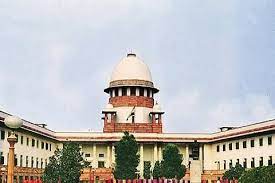
The Chief Justice of India N.V. Ramana has urged the Government to seriously consider Attorney General K.K.Venugopal’s suggestion to restructure the judiciary to include four National Courts of Appeals.
- He remarked that the judicial structure has remained stagnant since Independence and with four appellate courts, pendency will be remarkably reduced.
- The National Court Appeal with regional benches in Chennai, Mumbai and Kolkata is meant to act as final court of justice in dealing with appeals from the decisions of the High Courts and tribunals within their region in civil, criminal, labour and revenue matters.
- In such a scenario, a much-relieved Supreme Court of India situated in Delhi would only hear matters of constitutional law and public law.
Suspension Of MPs:

In the ongoing Winter Session of Parliament, Minister for Parliamentary Affairs Prahlad Joshi sought the approval of the House for suspending 12 Rajya Sabha MPs for the remainder of the session.
- The reason for their suspension was “their unprecedented acts of misconduct, contemptuous, unruly and violent behaviour and intentional attacks on security personnel” on the last day of the Monsoon Session.
- MPs are required to adhere to certain rules of parliamentary etiquette.
- The presiding officer of each House can direct an MP to withdraw from the legislative chamber for grossly disorderly conduct.
- The MP then has to remain absent from the proceedings of the House for the remainder of the day.
- The presiding officers can also “name” an MP for “persistently and wilfully obstructing the business” of the House.
- In such a case, usually, the Parliamentary Affairs Minister moves a motion for suspending the offending MP from the service of the House. The suspension can last until the end of the session.
- In 2001, the Lok Sabha rule was amended to give the Speaker one additional power. A new rule, 374A, empowers the Speaker to automatically suspend an MP for a maximum of five days for disrupting the business of the House.
- In 2015, Speaker Sumitra Mahajan used this rule for suspending 25 Congress MPs.
Drug trafficking In Afghanistan:

Drugs have been a major source of revenue for the Taliban. With the collapse of Afghanistan’s economy, the Taliban will rely heavily on drug money to maintain control over their cadres.
- According to the latest World Drug Report of the United Nations Office on Drugs and Crime:
- Afghanistan reported a 37% increase in the extent of land used for illicit cultivation of opium poppy during 2020 compared with the previous year.
- The country accounted for 85% of the global opium production last year.
- Despite the improved capabilities of the Afghan specialised units over the years, drug seizures and arrests had minimal impact on the opium-poppy cultivation.
- Afghanistan is also turning out to be a major source for methamphetamine.
World Drug Report 2021:
- Around 275 million people used drugs globally in the last year. Over 36 million people suffered from drug use disorders.
- Rise in the use of cannabis during the pandemic has been reported by most countries.
- Non-medical use of pharmaceutical drugs has also been observed in the same period.
- The latest global estimates say, about 5.5 per cent of the population between 15 and 64 years have used drugs at least once in the past year.
- Over 11 million people globally are estimated to inject drugs – half of them have Hepatitis C.
- Opioids continue to account for the largest burden of disease-linked to drug abuse.
NASA’s Perseverance Rover:
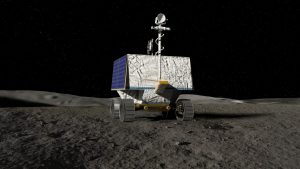
NASA’s Perseverance Mars Rover has made a video of the 13th flight of the Ingenuity Mars Helicopter sent by the agency.
About Perseverance Rover:
- It was launched in 2020 aboard a United Launch Alliance Atlas V.
- It carried a unique instrument, MOXIE or Mars Oxygen ISRU Experiment: which for the first time manufactured molecular oxygen on Mars using carbon dioxide from the carbon-dioxide-rich atmosphere (ISRU means In Situ Resource Utilization: or the use of local resources to meet human needs or requirements of the spacecraft).
- It carried Ingenuity, the first ever helicopter to fly on Mars.
- It is the planned first step to bring back rock samples from Mars for analysis in sophisticated laboratories on Earth: with the goal of looking for biosignatures: or signatures of present or past life.
Key mission objectives:
- Look for signs of ancient microbial life.
- Collect Martian rock and dust samples for later return to Earth.
- Deliver an experimental helicopter.
- Study the climate and geology of Mars.
- Demonstrate technology for future Mars missions.
One Web’s LEO Internet Programme:

OneWeb is considering options to remove one of its broadband satellites from low Earth orbit after it failed following a software issue last year.
- So far, OneWeb has deployed 358 satellites at 1,200 kilometers through 11 launches.
- OneWeb has a partnership formed earlier this year with debris-removal startup Astroscale under ESA’s Sunrise program.
About OneWeb’s LEO internet programme:
- OneWeb is a Low Earth Orbit (LEO) satellite communications operator.
- Using LEO satellites OneWeb seeks to offer connectivity across the UK, Alaska, Northern Europe, Greenland, the Arctic Seas and Canada.
- The company expects the service to be switched on before the end of the year.
- It calls this programme the ‘Five to 50’ service of offering internet connectivity to all regions north of 50 degrees latitude.
- LEO satellites are positioned around 500km-2000km from earth, compared to stationary orbit satellites which are approximately 36,000km away.
- As LEO satellites orbit closer to the earth, they are able to provide stronger signals and faster speeds than traditional fixed-satellite systems.
- Because signals travel faster through space than through fibre-optic cables, they also have the potential to rival if not exceed existing ground-based networks.
- LEO satellites travel at a speed of 27,000 kph and complete a full circuit of the planet in 90-120 minutes.
- As a result, individual satellites can only make direct contact with a land transmitter for a short period of time thus requiring massive LEO satellite fleets and consequently, a significant capital investment.
National Multidimensional Poverty Index: NITI Ayog

NITI Aayog has released the Multidimensional Poverty Index (MPI).
- Earlier, Global Multidimensional Poverty Index 2021 was released by the United Nations Development Programme (UNDP) and the Oxford Poverty & Human Development Initiative (OPHI).
- The MPI seeks to measure poverty across its multiple dimensions and in effect complements existing poverty statistics based on per capita consumption expenditure.
- According to Global MPI 2021, India’s rank is 66 out of 109 countries.
- The National MPI is aimed at deconstructing the Global MPI and creating a globally aligned and yet customised India MPI for drawing up comprehensive Reform Action Plans with the larger goal of improving India’s position in the Global MPI rankings.
- It has three equally weighted dimensions – health, education, and standard of living.
- These three dimensions are represented by 12 indicators such as nutrition, school attendance, years of schooling, drinking water, sanitation, housing, bank accounts among others.
Findings of the Index:
Poverty Levels:
- Bihar has the highest proportion of people of the state’s population followed by Jharkhand and Uttar Pradesh who are multidimensionally poor.
- Kerala registered the lowest population poverty levels, followed by Puducherry, Lakshadweep, Goa and Sikkim.
Malnourished People: - Bihar also has the highest number of malnourished people followed by Jharkhand, Madhya Pradesh, Uttar Pradesh, and Chhattisgarh.
Zero Defect Zero Effect Scheme:
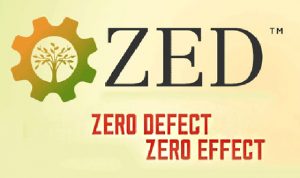
According to the recent data, as many as 23,948 Micro, Small and Medium-sized Enterprises (MSMEs) had registered with intent to adopt the principle of the Zero Defect Zero Effect Scheme (ZED).
- Launched in 2016 by the Ministry of MSME, the scheme is an integrated and comprehensive certification system.
The scheme accounts for productivity, quality, pollution mitigation, energy efficiency, financial status, human resource and technological depth including design and IPR in both products and processes. - Its mission is to develop and implement the ‘ZED’ culture in India based on the principles of Zero Defect & Zero Effect.
Zero Defect:
- The Zero defect concept is focusing on the customer.
- Zero non-conformance or non-compliance
- Zero waste
Zero Effect:
- Zero air pollution, liquid discharge, solid waste
- Zero wastage of natural resources
ZED Certification\Rating:
- The Rating is a weighted average of the marks obtained on each parameter.
- The MSMEs will be assessed & rated on defined enabler & outcome parameters on operational level indicators and organisational level indicators at the operational level.
- Based on the assessment, the MSME will be ranked as Bronze-Silver-Gold-Diamond-Platinum enterprises.
- There are 50 parameters for ZED rating and additional 25 parameters for ZED Defence rating under ZED Maturity Assessment Model.
Objective of the Scheme:
- To develop an Ecosystem for Zero Defect Manufacturing in MSMEs.
- To promote adaptation of quality tools/systems and energy efficient manufacturing. Enable MSMEs for manufacturing of quality products.
- To encourage MSMEs to constantly upgrade their quality standards in products and processes.
- To develop professionals in the area of ZED manufacturing and certification.
- To support the ‘Make in India’ campaign
Implementation Agency of the Scheme:
- Quality Council of India (QCI) has been appointed as the National Monitoring & Implementing Unit (NMIU) for implementation of ZED.
- The Quality Council of India (QCI) is a non-profit organization registered under the Societies Registration Act of 1860.
Central Bank Digital Currency:
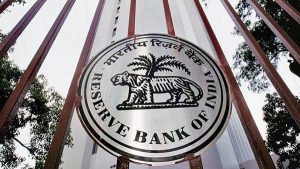
The Reserve Bank of India (RBI) has proposed amendments to the Reserve Bank of India Act, 1934, which would enable it to launch a Central Bank Digital Currency (CBDC), thus enhancing the scope of the definition of ‘bank note’ to include currency in digital form.
- The move has come amid the government’s plans to introduce a Bill on cryptocurrencies in the current Parliament session that seeks to prohibit all private cryptocurrencies in India with certain exceptions.
- CBDC is a digital form of Fiat Currency which can be transacted using wallets backed by blockchain and is regulated by the central bank. It is a legal tender issued by a central bank in a digital form.
- Fiat money is a government-issued currency that is not backed by a commodity such as gold. Fiat money gives central banks greater control over the economy because they can control how much money is printed.
- Though the concept of CBDCs was directly inspired by bitcoin, it is different from decentralised virtual currencies and crypto assets, which are not issued by the state and lack the ‘legal tender’ status.
India Young Water Professional Programme:
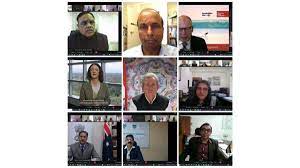
The Ministry of Jal Shakti has launched the first edition of the India Young Water Professional Programme.
- Its launch marks a significant milestone in Australia-India Water relationship. This Programme looks to prepare future water leaders.
- This program has been taken up under the National Hydrology Project. It will be implemented by Australia India Water Centre (a consortium of Australian and Indian universities).
- It is focused on Engaged Training and Learning Model. The Program will aim to achieve its objectives through the 70-20-10 framework, which states that three types of experience are required to learn:
- Experience 70% (learn and develop on the job)
- Exposure 20% (learn and develop through others)
- Education 10% (learn and develop through formal training)
- It also focuses on gender equality and diversity, because sustainable water management can only benefit from the views and skills of all members of society.
- It is outcome-driven and the participants will be having certain tools and techniques by the time they are finished with the Programme.
- Based on the success of this edition, a second phase of YWP will be planned in the later half of the year 2022.
- It aims to provide a structured platform for capacity building with strategic and long-term investment to support the water management reforms in India.
- To equip water professionals with the necessary skills, knowledge, behaviours and networks that will better enable them to contribute to the development and management of water resources in India, and to address the competency needs and priorities of the water sector in India.




